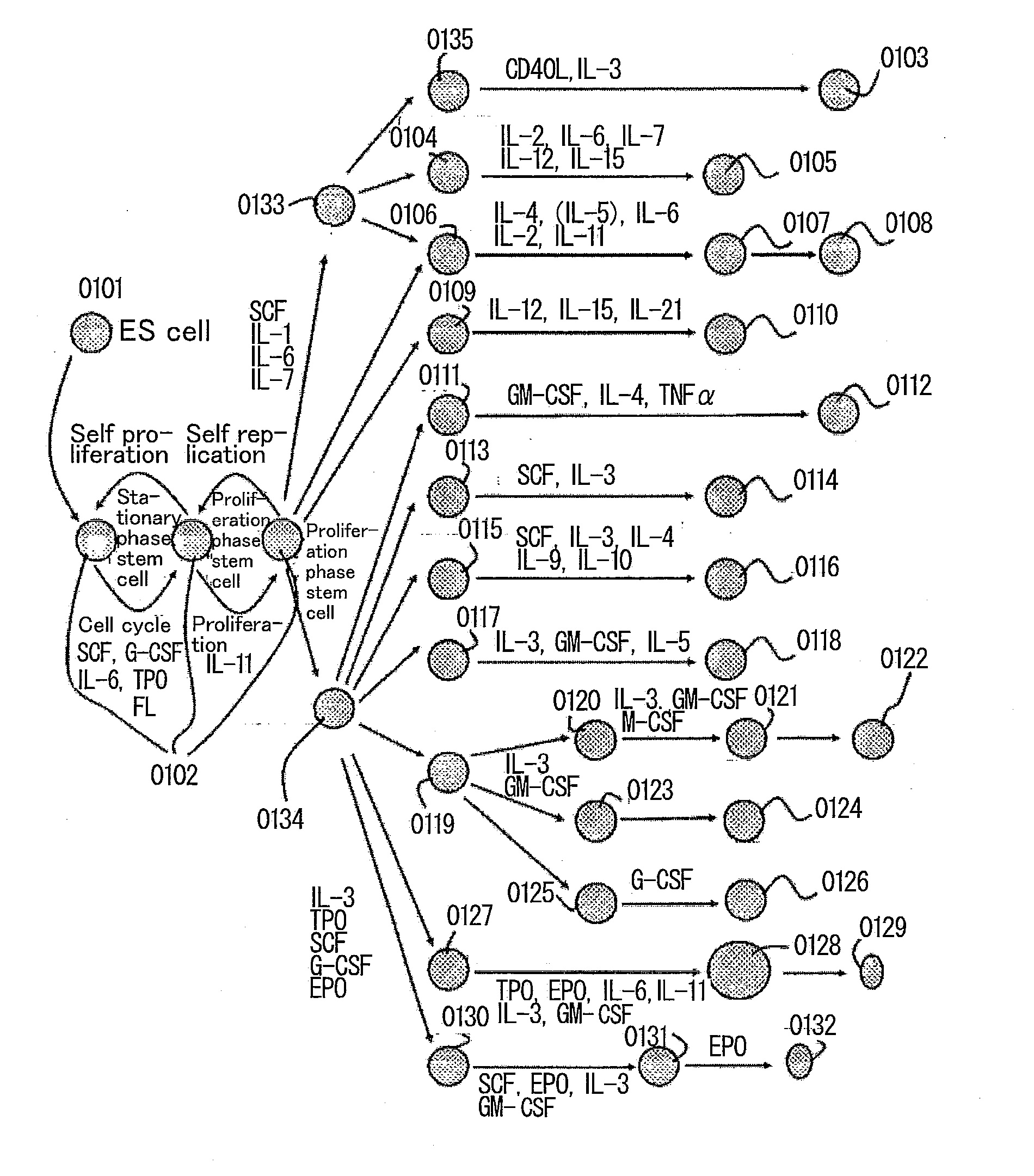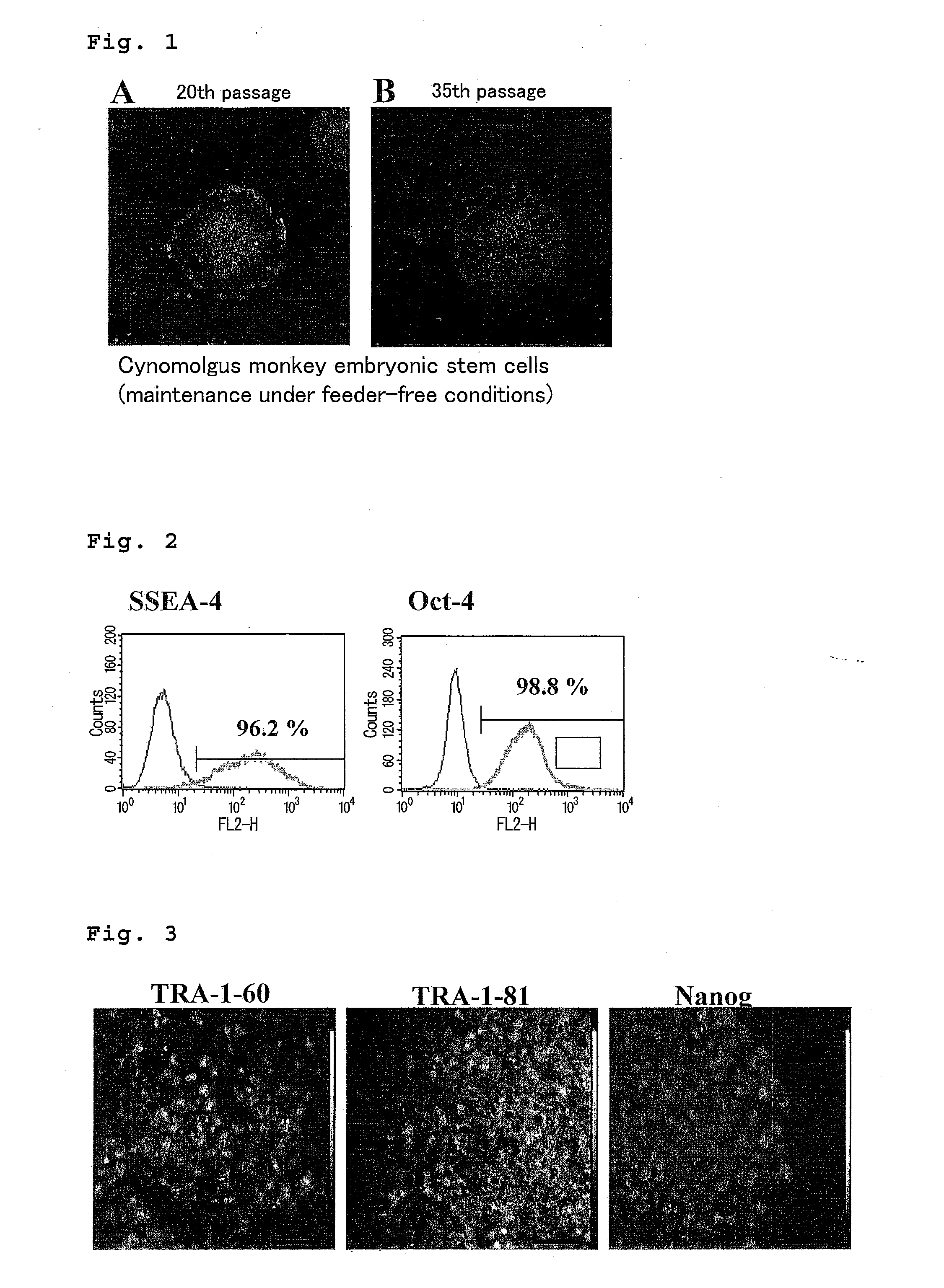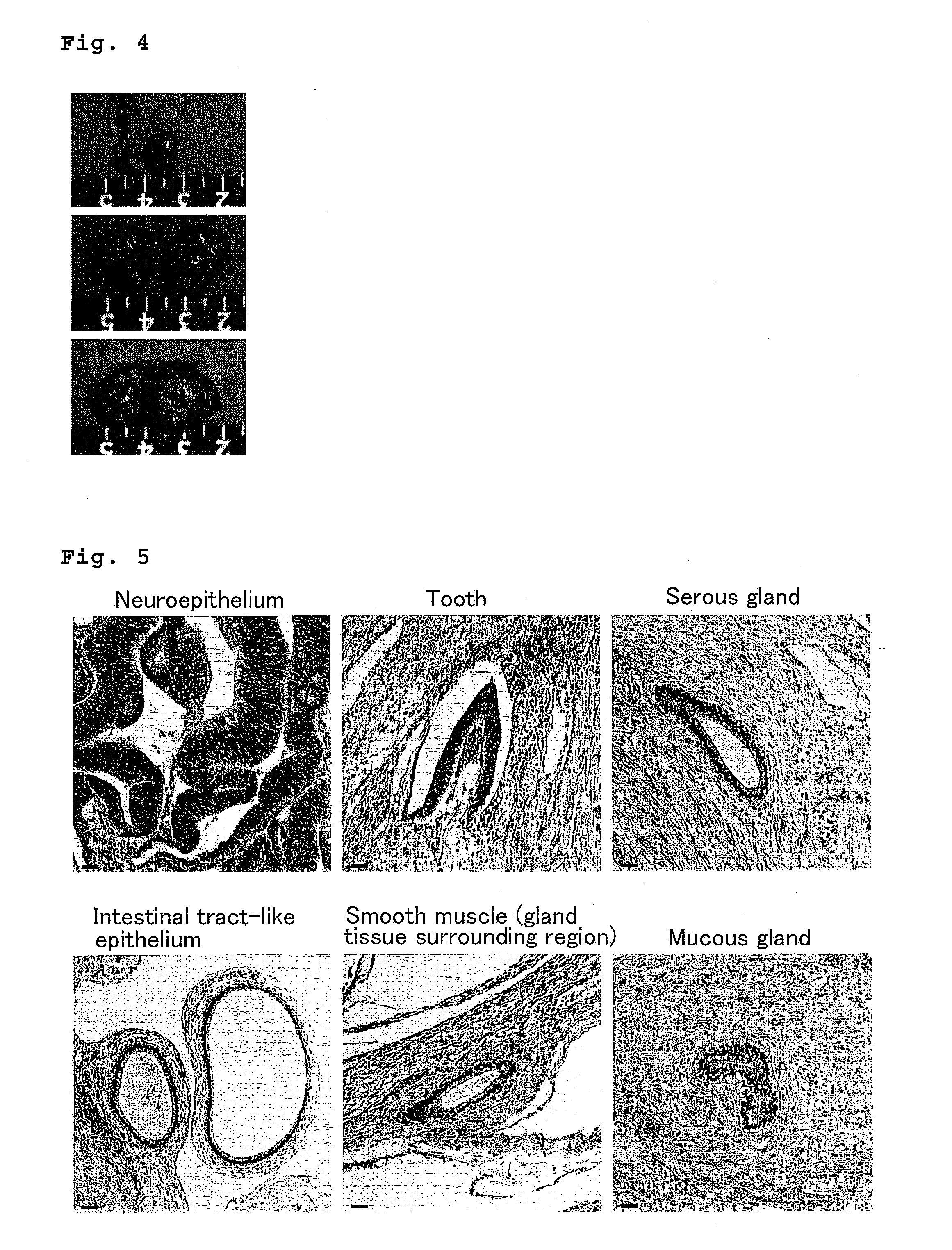Method for culturing and subculturing primate embryonic stem cell, as well as method for inducing differentiation thereof
a technology of embryonic stem cells and subculturing methods, which is applied in the field of culturing and subculturing primate embryonic stem cells, can solve the problems of inability to meet the needs of clinical application, risky drug administration might be overlooked, and the method of continuously culturing and subculturing embryonic stem cells derived from primate including humans cannot be established, so as to achieve safe and efficient preparation, safe culture, and low cost
- Summary
- Abstract
- Description
- Claims
- Application Information
AI Technical Summary
Benefits of technology
Problems solved by technology
Method used
Image
Examples
example 1
Undifferentiation-Maintenance Culture of Cynomolgus Monkey Embryonic Stem Cells without Using Feeder Cells and Cytokines
(1) Preparation of Undifferentiation-Maintenance Culture Solution
[0208]Cynomolgus monkey embryonic stem cells were cultured at 37° C. and 5 volt CO2 in a CO2 incubator on a 10 cm culture dish or a 78 cm2 culture dish which was coated at room temperature for around 15 minutes to 30 minutes with Matrigel© matrix [manufactured by BS (BD Biosciences)] diluted by 30-fold with an undifferentiation-maintenance culture solution 1-1 (composition: DMEM / Ham'S F-12 [manufactured by Kohjinbio Co., Ltd.], 20 vol % KNOCKOUT® SR [manufactured by Invitrogen Corp.], 1 mM L-glutamine [manufactured by Invitrogen Corp.], 2 mM non-essential amino acid solution [manufactured by Invitrogen Corp.], 1 mM sodium pyruvate [manufactured by Invitrogen Corp.], final concentration 100 U / ml of penicillin [manufactured by Invitrogen Corp.], final concentration 100 μg / ml of streptomycin [manufacture...
example 2
Undifferentiation-Maintenance Culture of Human Embryonic Stem Cells without Using Feeder Cells and Cytokines (Method Using Culture Container Coated with Matrigel® Matrix)
(1) Preparation of Undifferentiation-Maintenance Culture Solution
[0219]Cynomolgus monkey embryonic stem cells were cultured at 37° C. and 5 volt CO2 in a CO2 incubator on a 10 cm culture dish or a 78 cm2 culture dish coated at room temperature for around 15 minutes to 30 minutes, with Matrigel® matrix [manufactured by BS (BD Biosciences)] diluted by 30-fold with an undifferentiation maintenance culturing solution 1-1 (composition: DMEM / Ham'S F-12 [manufactured by Kohjinbio Co., Ltd.], 20 vol % KNOCKOUT® SR [manufactured by Invitrogen Corp.], 1 mM L-glutamine [manufactured by Invitrogen Corp.], 2 mM non-essential amino acid solution [manufactured by Invitrogen Corp.], 0.1 μM 2-mercaptoethanol [manufactured by Sigma Chemical Co.], final concentration 100 U / ml of penicillin [manufactured by Invitrogen Corp.], final con...
example 3
Undifferentiation-Maintenance Culture of Human Embryonic Stem Cells without Using Feeder Cells and Cytokines (Method Using a Culture Container Coated with One Kind of Human-Derived Protein Component)
(1) Preparation of Undifferentiation-Maintenance Culture Solution
[0227]The medium as described in Example 2 was used.
(2) Technique of Undifferentiation-Maintenance Culture
[0228]The human embryonic stem cells are plated at the density of about 2 to 3 within the microscope's field of view using a phase-contrast microscope equipped with 4× objective lens and 10× ocular lens in the condition that the colony is relatively uniformed in size to have the diameter of 500 μm, and thereafter, medium exchange is performed every day. Since the size of the colony becomes about 1,000 μm after 3 to 4 days, the cells are detached using a cytodetachment solution 1 (composition: 0.25% trypsin solution [manufactured by Invitrogen Corp.], 1 mg / ml collagenase IV [manufactured by Invitrogen Corp.], 1% KNOCKOUT...
PUM
| Property | Measurement | Unit |
|---|---|---|
| diameter | aaaaa | aaaaa |
| diameter | aaaaa | aaaaa |
| diameter | aaaaa | aaaaa |
Abstract
Description
Claims
Application Information
 Login to View More
Login to View More - R&D
- Intellectual Property
- Life Sciences
- Materials
- Tech Scout
- Unparalleled Data Quality
- Higher Quality Content
- 60% Fewer Hallucinations
Browse by: Latest US Patents, China's latest patents, Technical Efficacy Thesaurus, Application Domain, Technology Topic, Popular Technical Reports.
© 2025 PatSnap. All rights reserved.Legal|Privacy policy|Modern Slavery Act Transparency Statement|Sitemap|About US| Contact US: help@patsnap.com



